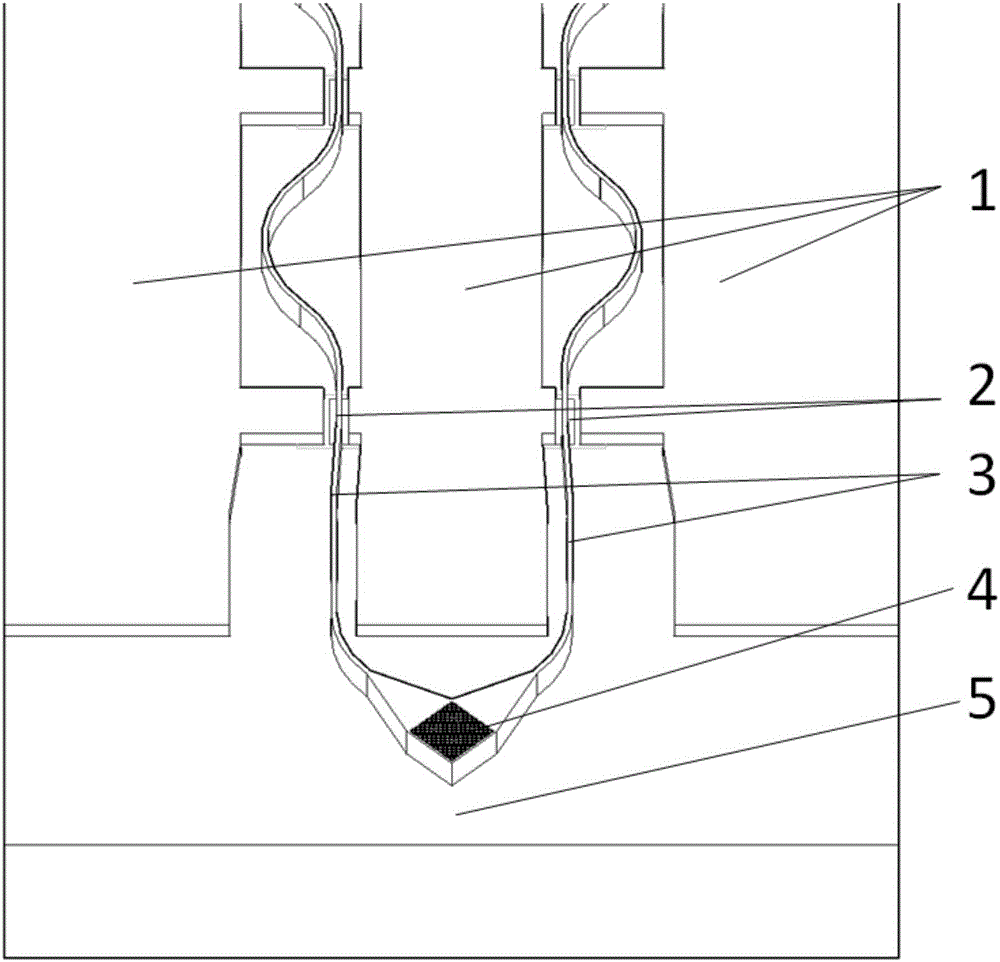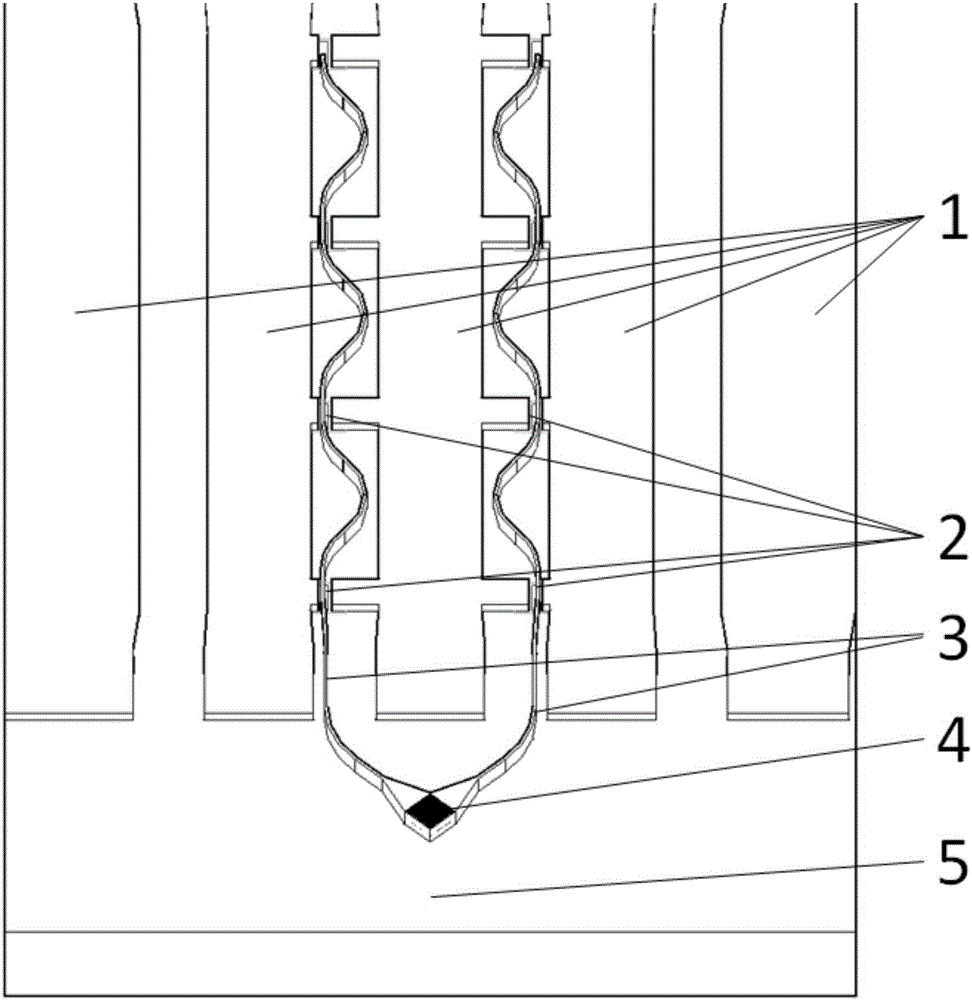Traveling wave photoelectric detector integrated with polarization coupling processing
A photodetector and photodetection technology, which is applied in the field of photodetectors, can solve problems such as the complexity of photoelectric links, increased hardware costs, and difficulties in daily use and maintenance, so as to avoid the reduction of responsivity, improve the signal-to-noise ratio, and simplify Effect of Device Configuration
- Summary
- Abstract
- Description
- Claims
- Application Information
AI Technical Summary
Problems solved by technology
Method used
Image
Examples
Embodiment 1
[0023] figure 1 It is a schematic structural diagram of the photodetector provided in this embodiment. The photodetector of this embodiment includes a constituent unit, and each constituent unit includes a radio frequency transmission line 1, a photodetection unit 2 loaded on both sides of the transmission line, two A passive optical waveguide 3 connected to each other at one end, a passive two-dimensional grating 4 set at the junction of the two passive optical waveguides, wherein the radio frequency transmission line is connected to the output end of the optical detection unit 2; the passive optical waveguide is used for optical The detection unit provides an optical signal.
[0024] Among them, the metal radio frequency transmission line 1 is the ground electrode G, signal electrode S, and ground electrode G from left to right. The ground electrode G, signal electrode S, and ground electrode G constitute the electrode frame (GSG) of the traveling wave photodetector. The rad...
Embodiment 2
[0032] like figure 2 As shown, the photoelectric sensor provided in this embodiment includes two constituent units. The radio frequency transmission line 1 is, from left to right, the ground electrode G, the signal electrode S1, the ground electrode G, the signal electrode S2, the ground electrode G, and the ground electrode G. , signal electrode S1, ground electrode G, signal electrode S2, and ground electrode G form an electrode frame (GSGSG) of two traveling wave photodetectors in parallel; output connection. This embodiment increases the number of constituent units to two, enabling the photodetector to simultaneously separate two groups of optical signals whose polarization states are perpendicular to each other, and convert them into corresponding radio frequency signals for output, realizing integrated polarization demultiplexing photoelectric conversion.
PUM
 Login to View More
Login to View More Abstract
Description
Claims
Application Information
 Login to View More
Login to View More - R&D
- Intellectual Property
- Life Sciences
- Materials
- Tech Scout
- Unparalleled Data Quality
- Higher Quality Content
- 60% Fewer Hallucinations
Browse by: Latest US Patents, China's latest patents, Technical Efficacy Thesaurus, Application Domain, Technology Topic, Popular Technical Reports.
© 2025 PatSnap. All rights reserved.Legal|Privacy policy|Modern Slavery Act Transparency Statement|Sitemap|About US| Contact US: help@patsnap.com



